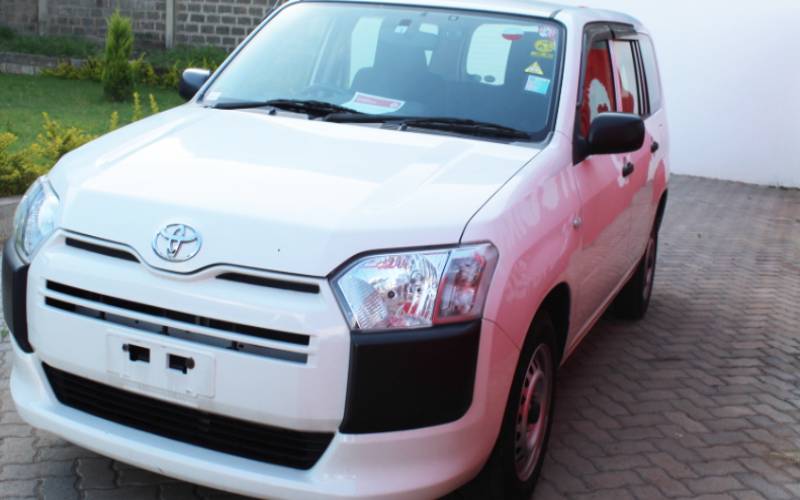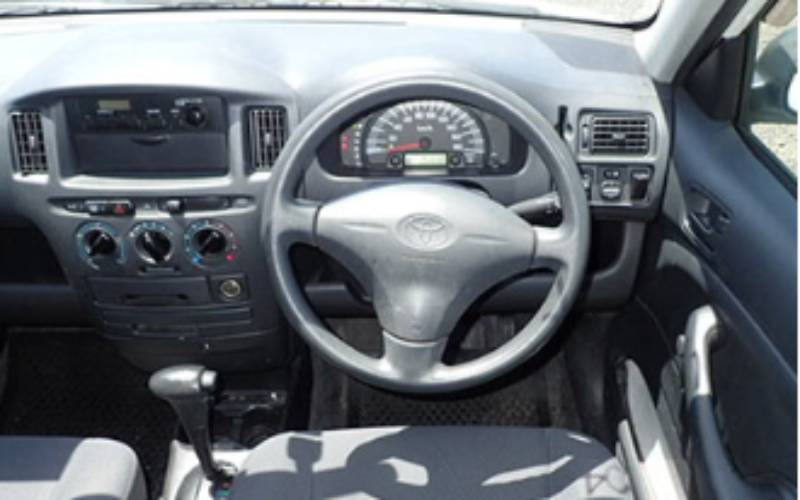
The Toyota Probox has a reputation for reliability, no doubt.
The vehicle has been christened a workhorse in almost all markets that it has been sold in.
In Kenya, it has a good and bad reputation. The good reputation is that it is easy to maintain, can carry a heavy load that many of its peers would struggle to transport, and has an almost instant acceleration.
The bad reputation is that it is associated with people of bad image – the reckless drivers, criminals (in some cases), and rogue policemen.
The Probox was first manufactured in Japan, the headquarters of Toyota, in 2002.
It looks almost identical to the Toyota Succeed, though it is shorter in length. Unlike its Succeed sibling that features a four-wheel independent suspension, the Probox has a rear leaf-spring suspension setup like that of a pick-up.
In countries like Peru and Bolivia, the Probox is the undisputed taxi services king. In Kenya, its use is diverse – transporting people on long distances, ferrying goods, most notably miraa from Meru County, and other farm produce.
Croton Motors describes the Probox as “a hardy, robust car that can take a lot of abuse”.
“You can bank on the reliability of the Toyota Probox as there have not been any major problems reported about the vehicle,” says Croton.
The Probox’s global popularity grew exponentially in 2009.
The vehicle comes in two engine sizes; a 1,300cc and a 1,500cc petrol engine versions, with either a four-speed automatic transmission or a five-speed manual transmission.
Its rivals include the Nissan sisters of Ad-Van and Wingroad.
In Kenya, a 2015 Toyota Probox would cost you between Sh900,000 and Sh1.1 million.
The 1,500cc Toyota Probox has a horsepower of 105, accelerating from 0 to 100 kilometres per hour in 11.7 seconds. Its 1,300cc equivalent does the 0-100kph in 13 seconds, and has a horsepower of 88.
The acceleration is quite impressive, as there are other vehicles with similar engine sizes that take longer to reach the 100 kilometres per hour mark.
Data shows that the Toyota Probox could give you an average fuel consumption of 15kms per litre. However, aggressive drivers would, expectedly, get bad fuel economy.
The Toyota Probox has a full tank capacity of 50 litres. That means you’ll need Sh7,500 ($64) to fill its tank at the current petrol price of Sh150.12 ($1.29) per litre in Nairobi, Kenya.
With an average of 12 kilometres per litre, this amount of fuel can transport you some 620 kilometres.
The Probox that has a 1,300cc engine is two-wheel drive, while the 1,500cc one can be found in either two-wheel drive or four-wheel drive.
The Probox has a kerb weight (when unloaded) of between 1,030kgs and 1,170kgs, making it fairly heavy and grounded, which is good for driving at higher speeds.
According to Toyota, the Probox can comfortably carry up to 400kgs of load.
The vehicle has a ground clearance of about six inches, which isn’t sufficient for those who like driving off-road. However, it is just good enough for urban driving and occasional out-of-town drives.
The five-door vehicle sits a maximum of five people, though in Kenya, we’ve seen the sitting capacity being stretched to sometimes even eight or ten people, with some occupants placed in the boot.
Nairobi-based mechanic, Joshua Omondi, tells The Standard that the Probox is one of the vehicles whose spare parts are readily available, owing to its high popularity in the Kenyan market.
“The Probox shares spare parts with many other Toyota models, such as Toyota Wish and Corolla. For example, the engine mounting, spark plugs, brake pads, oil and fuel filters that the Probox uses are not specific to it. We can use other vehicles’ parts on the Probox, and the car will serve you just fine,” said Otieno, who runs a garage in South B.
Omondi, 36, adds that the Probox is equipped with the VVTi technology (Variable Valve Timing with Intelligence) for enhancing the engine performance and fuel economy.
Gilbert Wainaina, who sells vegetables and potatoes in large quantities in Nairobi, says he uses the car to transport the produce. He’s owned the Probox for four years now.
“I usually drive from my farm in Ndumberi, Kiambu County four times a week, and the Probox serves me well,” he told The Standard.
“What impresses me most about this car, is that I can drive 80 kilometres per hour while it’s stocked with potatoes and vegetables, and it would remain stable on the road,” said Wainaina.
Mechanic Omondi said the Probox’s body is, however, not hardy, making it vulnerable to defacing.
“If you aren’t a careful driver, chances are high the body will be hit often or scratched. In the long run, regular painting reduces the value of the vehicle. The Probox’s body is fairly weak,” he said.
The other downside of the Probox is its extremely basic interior, including the instrument panel.

The dashboard is even more basic. There's absolutely no infotainment system. Even a stereo head unit isn't standard. This now would be up to you to install one after buying the car, an extra cost of course. A good infotainment would set you back up to Sh100,000.
The HVAC controls are plain and easy to understand. There are two circular control panels for changing the temperature and fan settings. An orange display shows the selections.
Several people have also complained that the Probox’s seats are not comfortable, and that the legroom is inadequate for tall and fairly tall people.
Its Nissan Ad-Van and Toyota Succeed peers are more oriented for transporting passengers. The Probox, on the other hand, is more associated with transporting cargo, with passenger comfort taken into consideration secondarily.
One of the commonest problems that Toyota Probox owners have reported is loss of power and stalling after long periods of use.
Others are hard-start when engine is cold, body vibration, rough idling, slow acceleration when the vehicle ages, transmission and gear shift problems.
In most instances, you’ll need to replace the gearbox if the transmission problems persist.
 The Standard Group Plc is a multi-media organization with investments in media platforms spanning newspaper print
operations, television, radio broadcasting, digital and online services. The Standard Group is recognized as a
leading multi-media house in Kenya with a key influence in matters of national and international interest.
The Standard Group Plc is a multi-media organization with investments in media platforms spanning newspaper print
operations, television, radio broadcasting, digital and online services. The Standard Group is recognized as a
leading multi-media house in Kenya with a key influence in matters of national and international interest.

